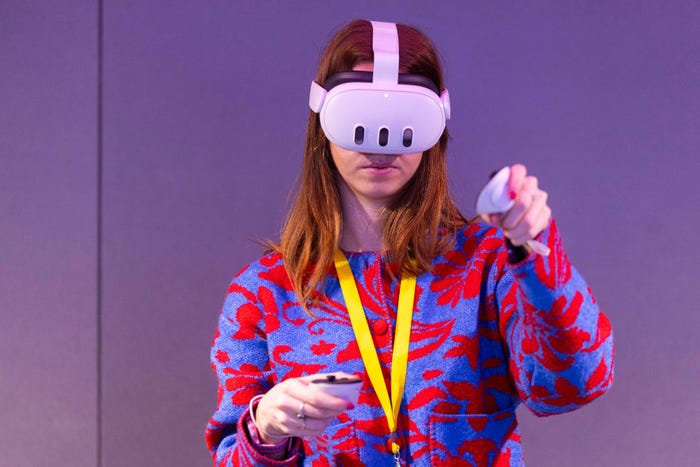Linux in the Metaverse: Building Virtual Worlds With Open-Source ToolsLinux in the Metaverse: Building Virtual Worlds With Open-Source Tools
Explore how Linux-based platforms and tools are shaping immersive virtual experiences, highlighting recent advancements, open-source developments, and future trends.

The Metaverse is a virtual universe where users can interact with each other and digital objects in real time, employing cutting-edge technologies and virtual/augmented reality headsets. Embraced by gamers, futurists, technologists, scientists, doctors, and other enthusiasts, the Metaverse has found Linux to be a key facilitator, embedded deeply within its virtual fabric.
In this article, we will explore how Linux-based platforms and tools are shaping virtual experiences in the Metaverse.
We will also cover:
Recent advancements in Linux-based virtual reality (VR) and augmented reality (AR) technologies;
Open-source platforms for building virtual environments; and
The future of Linux and the Metaverse.
The Emergence of the Metaverse
The Metaverse is a convergence of several technologies, namely:
Augmented reality
Social networking
Gaming
Immersive hardware (headsets)
Once a sci-fi and Hollywood concept, the Metaverse has become a functional reality owing to recent technological advancements. Major technology companies like Meta, Microsoft, and Epic Games have invested heavily in developing their Metaverse platforms. Additionally, the Metaverse extends its functionality to business applications, such as immersive virtual meetings and collaborative workspaces.
The Metaverse could very well redefine how we interact with digital content and each other. It offers a wealth of opportunities, ranging from remote interactive social gatherings to entertainment and commerce.
The Role of Linux in Virtual World Development
Linux is known for its robust architecture, flexibility, scalability, and open-source nature. Its compatibility with various CPU architectures makes it an ideal platform for creating virtual worlds. Using Linux, developers can build immersive and scalable environments due to its plasticity, interoperability, and customizable features.
On top of all this, Linux’s open-source nature and active developer community foster a culture of collaboration and innovation – key ingredients for developing virtual environments and virtual world technologies.
Linux in Virtual Reality and Augmented Reality
Linux-based platforms, tools, and packages underpin VR/AR experiences for users and developers alike. The platforms provide a sturdy and customizable foundation for immersive content and applications. Many Linux distributions, such as Fedora and Ubuntu, supply the necessary system infrastructure for VR/AR development.
A key advantage of Linux is its open-source ethos, which allows developers to modify the kernel source code to meet specific needs. Such flexibility helps to tailor VR/AR experiences to suit diverse use cases, including training simulations and visualizations. Linux-based platforms like SteamVR and OpenXR offer compatibility layers and runtime environments, ensuring integration with VR/AR hardware and peripheral devices.

Figure 1. Meta's Oculus headset is demonstrated at an event. (Credit: Alamy)
Open-Source Platforms for Building Virtual Environments
Thanks to its extensive range of open-source tools and platforms, Linux can support the creation of virtual environments. Projects like OpenSimulator, Janus VR, and High Fidelity provide frameworks for building, hosting, and interacting with virtual spaces.
OpenSimulator
OpenSimulator is an example of an open-source platform for creating and deploying virtual worlds with customizable terrain, buildings, and avatars. Built on the .NET Framework, OpenSimulator supports scripting languages, physical simulation, and user interactions.
Blender
Blender is a well-known open-source 3D modeling software package. It features an intuitive interface and extensive toolset for designing and animating intricate virtual landscapes, characters, and objects.
Janus VR
Janus VR is an open-source web browser designed for virtual reality applications. It enables users to interact with and explore immersive 3D websites and other virtual spaces. It’s built using HTML, CSS, and JavaScript, providing a familiar development environment for web developers.
The Future of Linux in the Metaverse Landscape
As the Metaverse unfolds, Linux represents a solid foundation for building the next generation of virtual worlds, anchored in its open-source heritage, robust ecosystem, and various developer tools. Looking ahead, we can expect ongoing advancements in Linux-based VR and AR technologies, coupled with the emergence of new open-source platforms and frameworks for creating virtual environments.
However, Linux-based platforms also pose some inherent challenges. A major challenge is ensuring compatibility across disparate systems and environments. Developers must stay up to date with the latest advancements in virtual world technologies to overcome these complexities.
Nevertheless, Linux’s open-source nature lays the groundwork for innovations and collaboration. Developers can harness the power of Linux and open-source tools to push the boundaries of virtual world development.

Figure 2. A customer tries Apple’s Vision Pro VR headset. (Credit: Alamy)
Use Cases and Applications
Linux-based virtual worlds have a wide range of applications, including virtual classrooms, training simulations, virtual tourism, and entertainment. These environments provide almost limitless opportunities for novel types of engagement and exploration.
A great example is Mozilla Hubs, an open-source platform for creating and hosting virtual gatherings and events. Built on Linux infrastructure, Mozilla Hubs enables users to connect and collaborate in virtual environments.
Another excellent example of Linux-based virtual worlds is the creation of virtual art shows and galleries, where artists can exhibit their work in a digital space and reach a global audience.
Final Thoughts
As the Metaverse continues to grow, Linux’s role in shaping virtual worlds assumes ever-greater importance. Its open-source nature and well-known advantages empower developers to create environments that redefine digital interactions and experiences.
Additional Resources and Links
Meta Oculus: https://www.meta.com/quest/
Open XR: https://www.khronos.org/openxr/
OpenSimulator: http://opensimulator.org/wiki/Main_Page
Janus VR: https://janusvr.com/
High Fidelity: https://github.com/highfidelity
Mozilla Hub: https://hubs.mozilla.com/
Blender: https://www.blender.org/download/
ITPro Today Resources
View my ITPro Today contributor page for links to my other Linux articles.
Read more about:
MetaverseAbout the Author
You May Also Like








.jpg?width=700&auto=webp&quality=80&disable=upscale)
